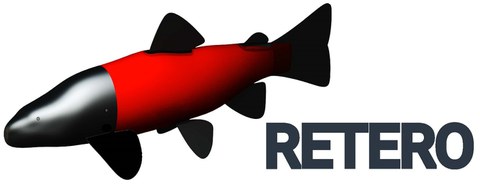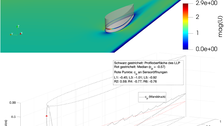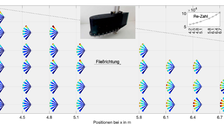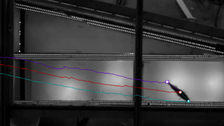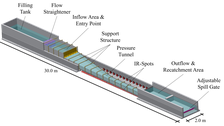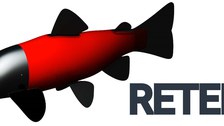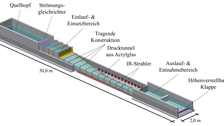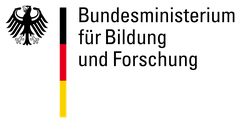Reduction of animal experiments on the risk of damage to hydropower plants - utilization of passive sensor fish and their digital twin
Table of contents
Short Description
The aim of the project is to reduce experiments with live wild fish to evaluate the damage to fish during the passage of turbines and other downstream corridors at power plants and other hydraulic structures and to replace them completely in the long term with a modular system of experimental and numerical replacement systems. To this end, a large number of studies were carried out and methods developed in the project:
- Behavioural studies investigate the reactions of fish during passage of the structures and are implemented in the numerical models.
- Studies on collisions and impact events and the associated structural-mechanical response of the fish bodies on the basis of flexible replacement bodies allow the development of new types of sensors and the transfer of sensor data into damage predictions.
- Numerical surrogate models provide high-resolution, spatial and temporal data on the flow in conjunction with fish behaviour models.
- Robotic surrogate fish will be equipped with specialized pressure and acceleration sensors to assess and set physical factors and thresholds for hydropower-induced damage and mortality caused by downstream passage through turbines and hydraulic structures.
- Non-invasive mini-sensors that can be applied to the fish (backpack sensors) provide extended data and findings per fish and allow a significant reduction in the number of laboratory animals.
The new methods provide the basis for prediction models that allow an assessment of the risk of harm with reduced animal testing or can completely dispense with animal testing. The RETERO project combines the necessary expertise from biology, ethohydraulics, hydraulic engineering, fluid mechanics, microelectronics and information technology.
In the second phase of the project, the experiments from project phase I were expanded to include the taxonomic groups of Percidae and Cyprinidae and the results were also implemented in the replacement methods.
The IWD together with IGF were responsible for the laboratory tests. For this purpose, a test flume was constructed in the hydraulic engineering hall with which flow conditions could be generated according to the hypotheses established by fish biologists (spatial flow gradients, maximum flow velocities, lateral flow gradients, simulation of day/night conditions) and thus the behaviour in the inlet area of turbines and pumps could be investigated. The work focused on
- the design and construction of an ethohydraulic experimental flume to investigate fish behaviour upstream of turbines in accordance with the hypotheses,
- a 3D HN simulation of the hydraulics in the ethohydraulic experimental flume,
- the development of a 3D fish video tracking system to record and analyze the paths of fish movement,
- the metrological characterization of the flow situation in the ethohydraulic experimental flume,
- the supervision and video analysis of the animal experiments,
- the realization of experiments with sensor fish and
- development and application of a virtual sensor fish in 3D HN numerics.
Media
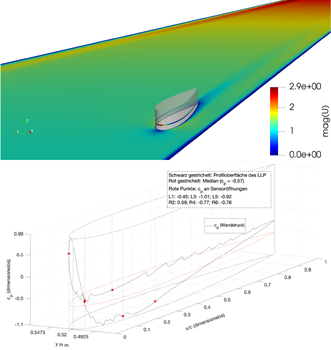
© Henrik Gößling
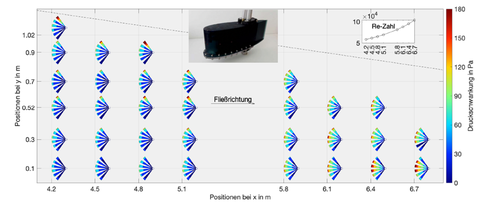
© Henrik Gößling
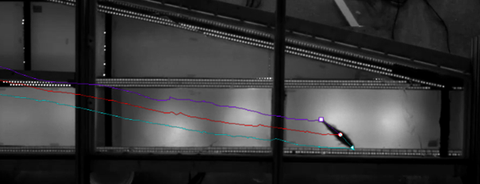
© Tom Rößger
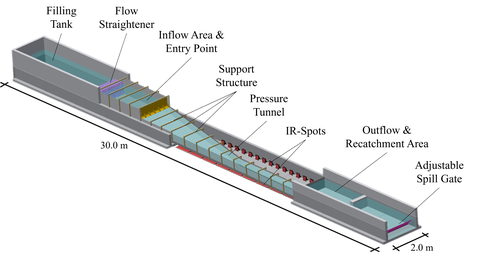
© Tom Rößger
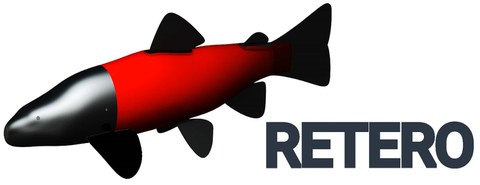
© Stefan Hoerner
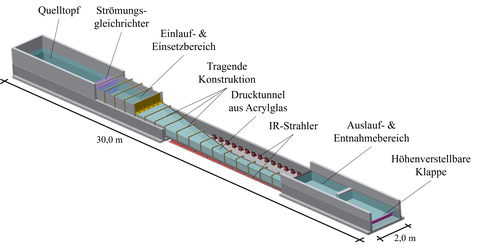
© Tom Rößger
Project Data
|
Website |
|
|
Period |
04/2022- 09/2024 |
|
Type of Funding |
Third Party |
|
Fundgiver |
German Federal Ministry of Education and Research |
|
TUD Research Priority Areas (RPAs) |
Energy, Mobility and Environment › Water Research |
|
Sustainable Development Goals (SDGs) |
SDG 7 – Affordable and Clean Energy SDG 14 – Life below Water |
|
Keywords |
Fish Descent, Ethohydraulics, Hydropower, Physical Modelling, Numerical Modelling |
Project Lead
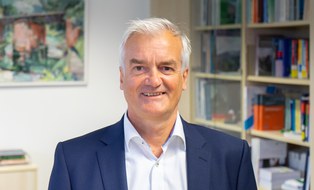 © Andrè Terpe
© Andrè Terpe
Professor
NameMr Prof. Dr.-Ing. Jürgen Stamm
Head of Inst., Chair Hyd. Eng. & School of Civ. & Environ. Eng.
Send encrypted email via the SecureMail portal (for TUD external users only).
Office of the Chair of Hydraulic Engineering
Visiting address:
Beyer-Bau, Room 04-22 George-Bähr-Str. 1
01069 Dresden
Office hours:
Appointments only by prior arrangement (phone or email)
Project Management
 © André Terpe
© André Terpe
Research Associate
NameMr Dipl.-Ing. Márcio Salgueiro Roth
Send encrypted email via the SecureMail portal (for TUD external users only).
Office of the Chair of Hydraulic Engineering
Visiting address:
Beyer-Bau, Room 04-10 George-Bähr-Str. 1
01069 Dresden
Office hours:
Please arrange a specific appointment in advance by e-mail.
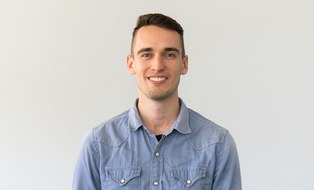 © André Terpe
© André Terpe
Research Associate
NameMr Dipl.-Ing. Tom Rößger
Send encrypted email via the SecureMail portal (for TUD external users only).
Visiting address:
Beyer-Bau, Raum 04-11 George-Bähr-Str. 1
01069 Dresden
Project Partners
|
Partner |
Type |
Website |
|
Otto von Guericke University of Magdeburg, Institute of Electric Power Systems (IESY) |
External |
|
|
Otto von Guericke University of Magdeburg, Institute of Fluid Dynamics and Thermodynamics (ISUT) |
External |
|
|
Institute of Freshwater Ecology and Fisheries Biology Jena (IGF) |
External |
|
|
sje Ecohydraulic Engineering GmbH (SJE) |
External |
|
|
Tallinn University of Technology, Centre for Biorobotics (Taltech) |
External |
Publications
- https://fis.tu-dresden.de/admin/editor/dk/atira/pure/api/shared/model/researchoutput/editor/workingpapereditor.xhtml?scheme=&type=&id=52934729 (DOI: http://dx.doi.org/10.1002/rra.4375)
- https://fis.tu-dresden.de/admin/editor/dk/atira/pure/api/shared/model/researchoutput/editor/contributiontobookanthologyeditor.xhtml?scheme=&type=&id=46376864 (ISBN: https://www.worldcat.org/isbn/9783867807661)
- https://fis.tu-dresden.de/admin/editor/dk/atira/pure/api/shared/model/researchoutput/editor/contributiontobookanthologyeditor.xhtml?scheme=&type=&id=45619094 (DOI: http://dx.doi.org/10.3850/978-90-833476-1-5_iahr40wc-p0334-cd)
- https://fis.tu-dresden.de/admin/editor/dk/atira/pure/api/shared/model/researchoutput/editor/contributiontobookanthologyeditor.xhtml?scheme=&type=&id=13225044 (DOI: http://dx.doi.org/10.3850/IAHR-39WC2521711920221615)
- https://fis.tu-dresden.de/admin/editor/dk/atira/pure/api/shared/model/researchoutput/editor/contributiontojournaleditor.xhtml?scheme=&type=&id=11413469 (DOI: http://dx.doi.org/10.1007/s35147-022-1076-8)
Further Information
- Press releases (german):
- 2024-05-16 SWR - SWR Wissen:
„Roboterfische sollen Tierversuche mit echten Fischen ersetzen“, Annegret Faber - 2024-05-08 Deutschlandfunk– Forschung aktuell:
„Todesfalle Wasserkraftwerk: Tierversuche mithilfe von Roboterfischen vermeiden“, Annegret Faber - 2022-06-28 MDR (Meike Krüger):
„Streit um Energiesicherheit: Keine Förderung für kleine Wasserkraftwerke” - 2020-08-17 Der Tagespiegel (Ralf Nader):
„Pummelfish soll Wasserkraft umweltfreundlicher machen” - 2020-05-04 3sat nano (Ricarda Wenge):
„Roboter als Fischtreppen-Tester” - 2020-04-15 Magdeburger Volksstimme (Julia Irrling):
„Wie Roboter Fische retten sollen” - 2020-03-30 MDR (Sachsen-Anhalt + rbb UM6) (Ricarda Wenge):
„Wie Roboter aus Magdeburg Fische retten sollen” - 2019-10-12 Tagesspiegel Background Digitalisierung & KI (Ralf Nestler):
„Wie Roboterfische Wasserkraft umweltfreundlicher machen sollen” - 2019-08-08 Sachsen-Anhalt #moderndenken:
„Mit Roboterfischen für besseren Tierschutz” - 2019-08-05 Süddeutsche Zeitung (Lena Hummel):
„Fisch-Dummys” - 2019-07-15 Vodafone.de featured (Marcus Woide):
„So sollen Roboter-Fische zur nachhaltigen Energiegewinnung beitragen” - 2019-07-11 MDR Sachsen-Anhalt (Christine Warnecke):
„Uni Magdeburg entwickelt Roboter-Fische” - 2019-07-02 TierVersuchGegner Berlin Brandenburg:
„Roboterfische sollen echte Fische vor Tierversuchen bewahren” - 2019-06-25 Tierrechte Baden-Württemberg:
„RETERO- Reduktion von Tierversuchen” - 2019-06-17 Pressemitteilung OvGU:
„Roboterfische ersetzen Tierversuche” - 2019-06-17 Süddeutsche Zeitung:
„Weniger Tierversuche: Uni Magdeburg entwickelt Roboterfische” (also n-tv.de, Fellbeißer) - 2019-06-17 Magdeburger Volksstimme:
„Uni Magdeburg entwickelt Roboterfische” - 2019-06-17 Magdeburger News:
„Uni Magdeburg: Roboterfische ersetzen Tierversuche” - 2019-06-17 Dresdner Neuesten Nachrichten:
„Weniger Tierversuche dank Roboterfischen” (auch The World News, Wolfsburger Allgemeine Aller-Zeitung, Hannoversche Allgemeine) - 2019-06-17 Welt.de:
„Tiere: Roboterfische ersetzen Tierversuche” - Press releases (english & other languages):
- 2019-10-30 Fondriest Environmental Monitor (Karla Lant):
Robotic Fish May Reduce Live Fish Testing Near Hydroelectric Plants - 2019-06-20 Engineering360 (Marie Donlon):
Researchers to replace live fish in animal testing with robotic fish - 2019-06-18 The Factory Files [nl] (Door Ad Spijkers):
Robot vervangt vis als proefdier

